| |
|
Forgotten Temples of Kashmir
Photo series Part-14 An effort to preserve and record Hindu cultural and religios heritage of Kashmir NARAN NAG 
Exclusive images and report from a remote village in Kashmir provided for Shehjarby Chander M. Bhat |
| Neelmata repeatedly makes mention of Bhuteshwara Teertha or Sodar Naag or Sodar Teertha. Kalhana too makes repeated mention of Sodar Naag or Naran Nag in Rajtarangini. To quote Taranga I canto 107 and 347, Taranga II canto 123 and 139 and Taranga IV canto 189, he too calls it Bhuteshwara or Bhutesha and Sodar Teertha. Again the spring inside this temple complex is referred to as Sodar Naag by him. Kalhana makes it clear that this temple complex was patronized by various kings of Kashmir. King Jaluka (137 BC) erected a stone temple at this site dedicated to Shiva Bhutesha. Kalhana adds that King Jayendra (61 BC) would come to worship Shiva Bhutesha at this temple complex. King Lalitaditya (713-735 AD) donated a good sum of money to this shrine after one of his victory expeditions. King Avantivarman (855-883 AD) built a stone pedestal with silver conduit at this shrine for bathing of sacred images. Kalhan’s family was also devoted to this Teertha. His father Canpaka paid frequent visits to this shrine. Kalhana’s uncle Kanka also happened to be a frequent visitor to this shrine. The Teertha had a large number of Purohits who were paid handsome salaries from the endowments created for the shrine. As per Kalhana, the treasury of this shrine was plundered by King Sangramraja of Kashmir (1003-28 AD) According to Lawrence, “in antiquity these ruins are supposed to rank next after those of Bumzu and Payech”. According to the scriptures, Naran Nag, in earlier times, was pilgrimages centre and was famous as Sodara Tirtha. With the passage of time the shrine must have lost its importance but it is said that pilgrims to Gangabal Tirtha continued to pay obeisance at this pilgrimage centre. This ancient shrine has a holy spring called Naran Nag, which has given the name Naran Nag to the locality. In the vicinity of the holy spring are found ruins of the temples, which have got buried almost completely and on the top of the largest, a pine tree has taken the roots. A footpath by the side of holy springs leads on to the height of Harmukh and to the height of Harmukh and to the mountain-lake Gangabal, a celebrated place of pilgrimage, 5,000 feet further up at the foot of Harmukh Mountain. It is said that Raja Narendraditya built the small temples. According to Lawrence, “It is probable that the Wangath temples were erected at different times by the returning pilgrims as votive offering after successful accomplishment of the hazardous ascent”. The surprising aspect about the temples is the fact that the material with which the stones of the temple have been joined is not known. Major Cole places the time of these temples as 1 AD. The structure of two clusters with six and eleven temples even though now in ruins are by and large a perfect example of Vastu Shastra as the back of these temples is towards the green hills which is treated as the most auspicious on account of Vastu Shastra philosophy. Each of the temple was built by perfect grafting of Devri Stones and matches to the masonry of Bumzu, Awantipora, Parihaspur, Pattan and Mattan temples. Its sanctity was of the highest level as all Kashmiri Pandits held it in held esteem. The wall behind the clusters measuring 176 feet in length and 130 feet in width probably also dates back to the era of temple. The material used to erect the structures is yet to be established as the structures have felt less effect of time and nature. The largest temple among the cluster of temples was a grabgrah holding the site of Lord Shiva or Bhuteshwara. The temple had two entrances one facing the rising sun and other the setting sun. This gives an idea that if there is entry from rising sun there is exit from the side of setting sun. It is also a philosophical point that every dawn is followed by the dusk. The next philosophy of the doors from sun rise and sun set is that the person entering during the time of sun rise could come out through the door of sun at the time of sun set if he wished to visit all the temples in the cluster. There is also a plinth wall measuring 100 feet by 67 feet and appears that this might have been a base of a magnificent structure. The visit to this temple was carried out me in the company of Shri Rakesh Sayal. Inspector Post Offices, North Sub Division, Srinagar and Shri Jagan Nath Bhat, Accountant, General Post Office, Srinagar on 10.09.2010 [the day of Eid] when there was mass agitation in the valley in view of reported desecration of Holy Quran by a Christian Zealot in United States. Rocks and stones were being rained by the protestors and security forces were doing their best to keep them at bay. Under these trying circumstances I had to travel all the way from Srinagar to Wangath and back. It was an odyssey and a triumph to keep the next generation aware of our golden culture. Notes and References: 1. Place Names in Kashmir by B.K.Raina & S.L.Sadhu, published by Bharatiya Vidya Bhavan, Mumbai & Indira Gandhi National Centre for Arts, New Delhi, 2000. 2. Encyclopedia: Kashmiri Pandit: Culture & Heritage by C.L.Kaul, published by Ansh Publications, 2009. 3. Ancient Monuments of Kashmir by Ram Chand Kak, published by Aryan Books International, New Delhi, 2000. 4. Kalhan’s Rajatarangini….A Chronicle of the Kings of Kashmir, Vol: II by Stein, Aurel, published by Motilal Banarasi Dass, 1979. 5. Sodaratiratha: Myth, Legend and History [Research Paper] by Dr. Ramesh Kumar Tamiri. |
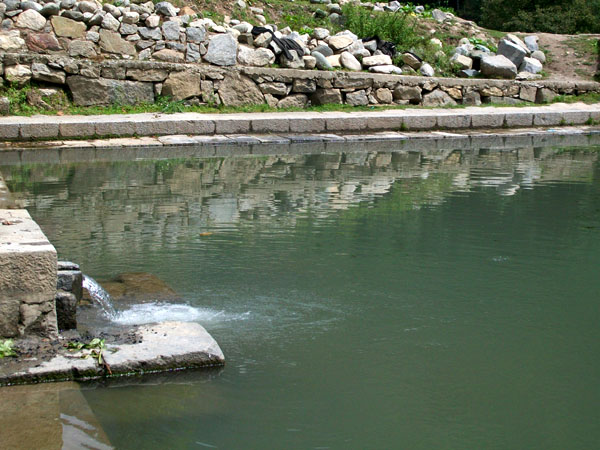
Close up of the holy spring The spring has its sancitity equivalent to_the waters of Holy Ganga |
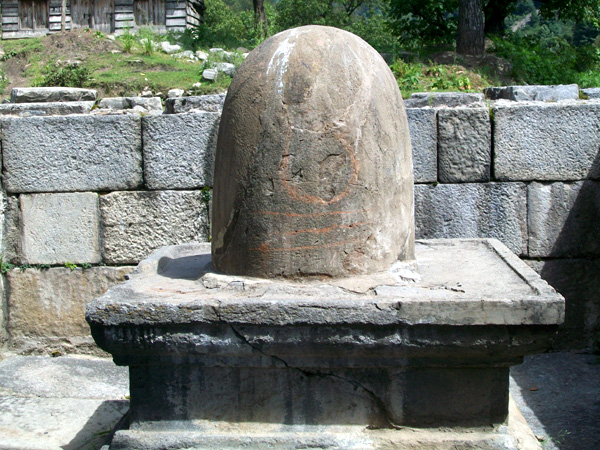
Lord Shiva in open looking to call back the devotees whom He so loved |

Another temple on the left side of main temple. Once a rose in this stonehedge park |
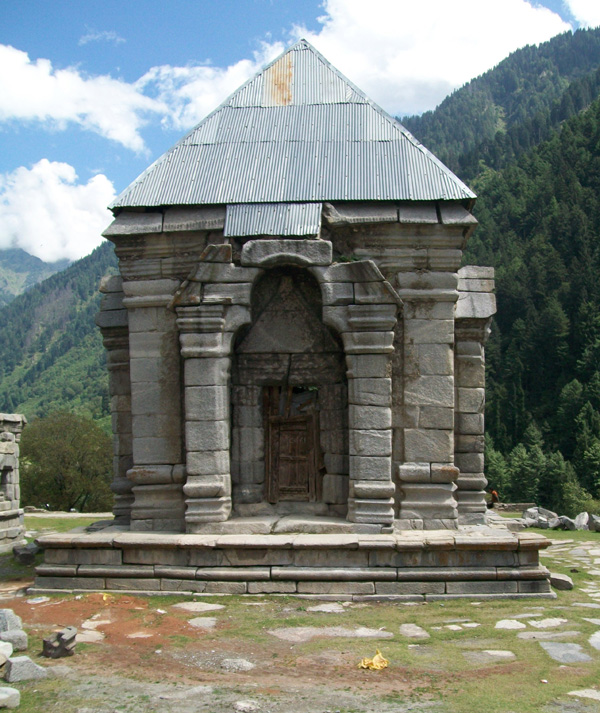
Small temple at the east gate of the temple complex. The only temple standing intact in the cluster |
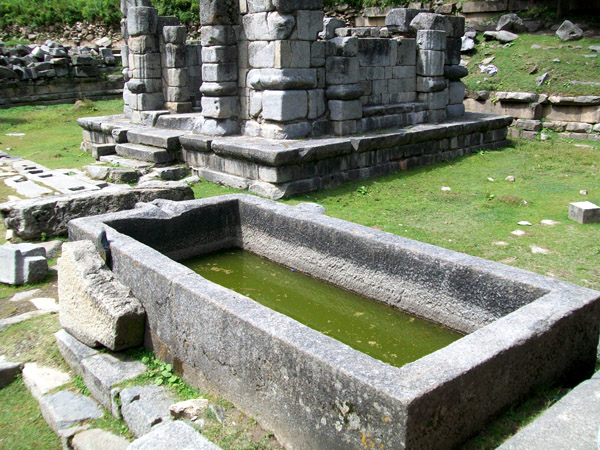
Bath tub made of a single stone reminds us of it also being used as a vihar by purohits |
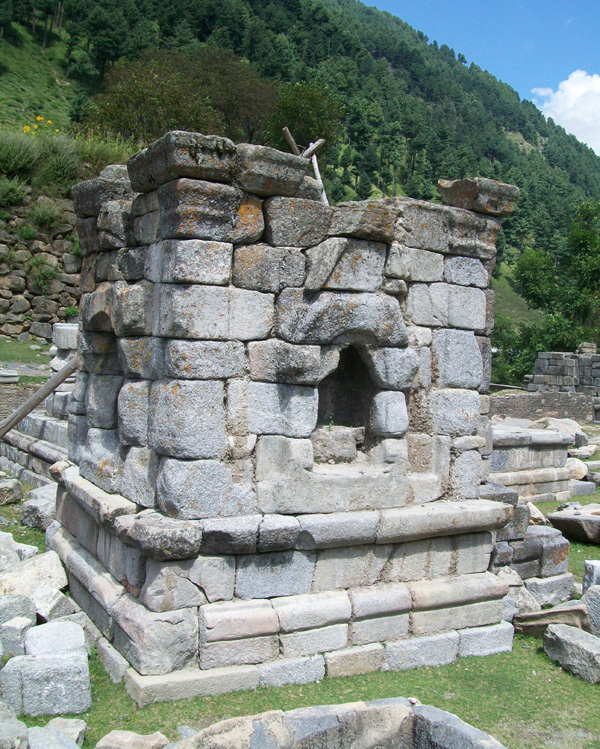
Small temple on the right side of main temple. Magnificiency of great Hindu Culture |
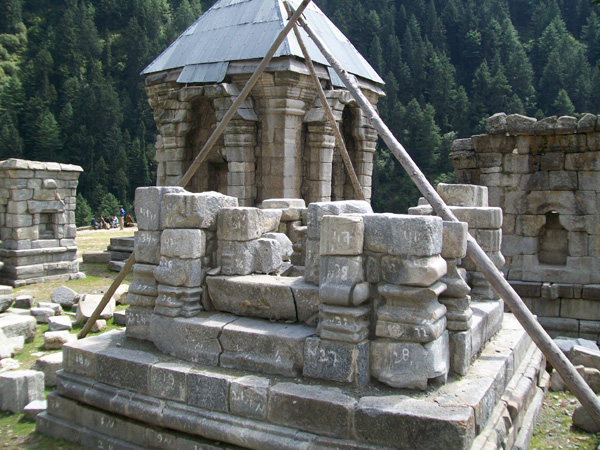
aRenovation by Archeology Deptt. at this belated stage. It is never so late |
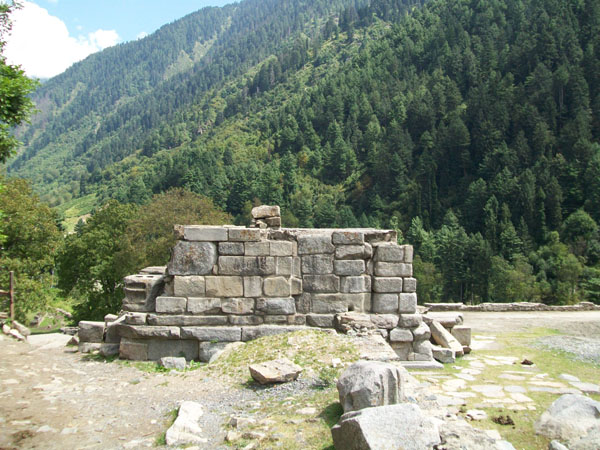
Base of another temple on the ridge of a slope. The heap of stones is not an ordinary history |
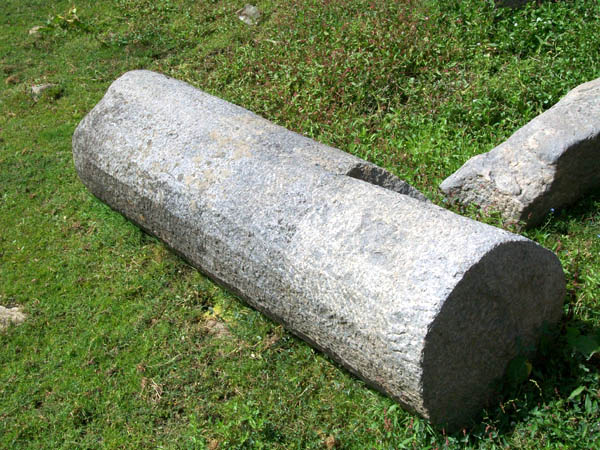 Stone Pillar. Once it was holding the weight of a huge structure. The strength of faith now taking a rest
Stone Pillar. Once it was holding the weight of a huge structure. The strength of faith now taking a rest |
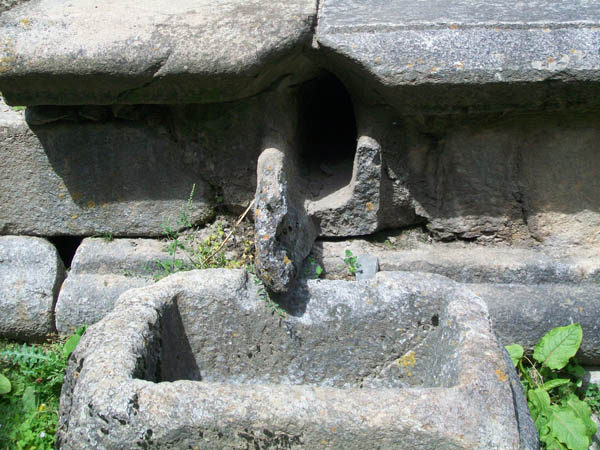
Pranali of the main temple. Once the outlet of the holy waters. A pefect draininge science adopted |
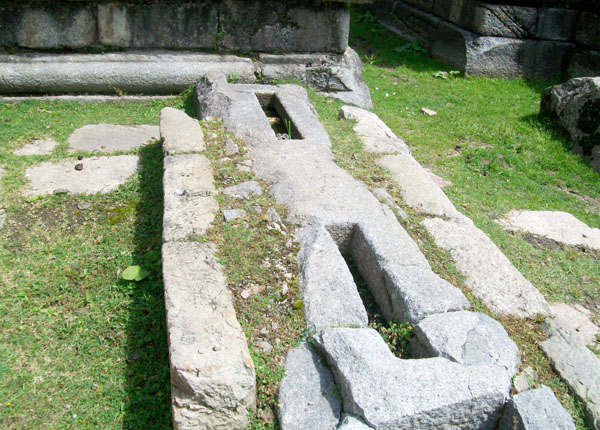
Base of the stone pillars. It defeats the logic of modern engineering |

Naran Nag. it is said that the water of this sprign directly comes from Gangabal |

A wooden drain prepared to make outlet of water from the cluster |
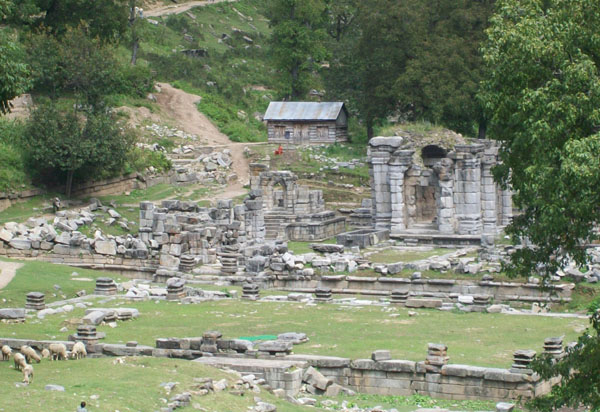
Temple complex. Let proponents of Vastu Shastra learn from here |
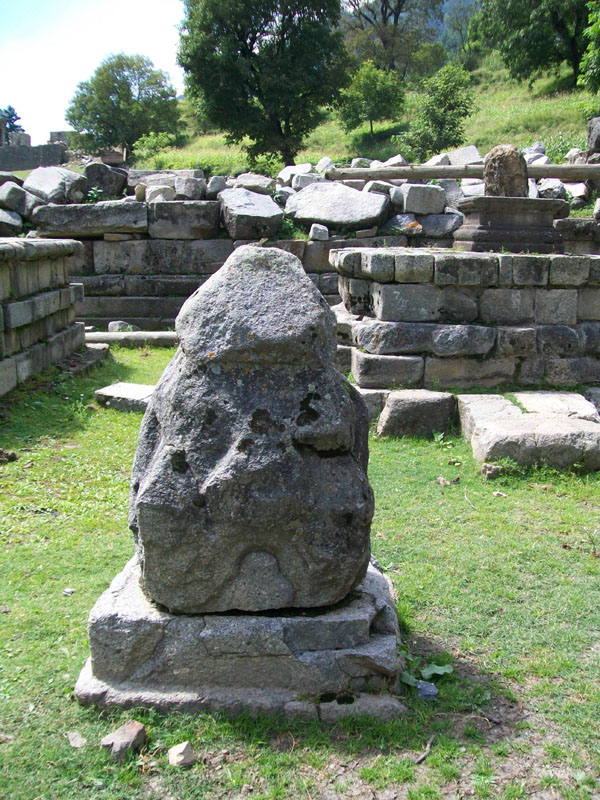
Probably the image of Nandi now not recognizable |
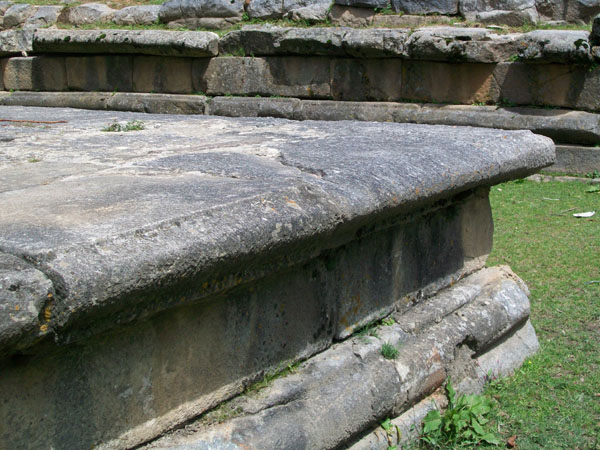
Plateform of the main temple. Path for circumambulation |
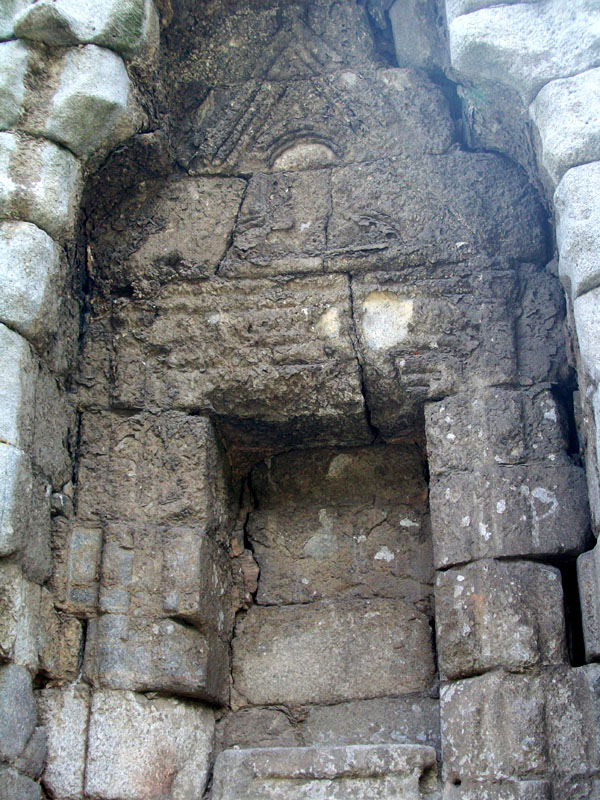
A stone shelf inside the temple |
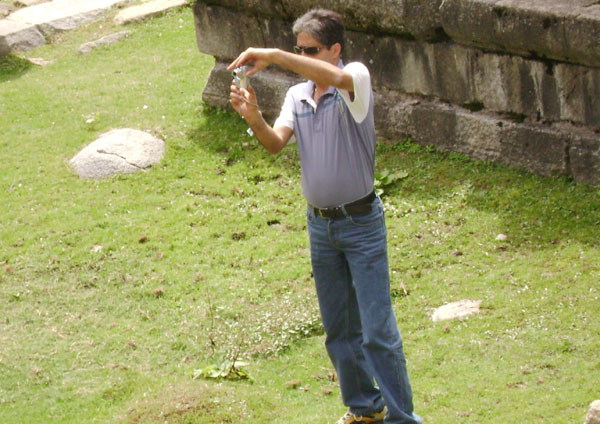
Author, Chander M Bhat in the lawns of Naran Nag trying to collect the scattered pieces of history. Done against all odds. |
| |
| |
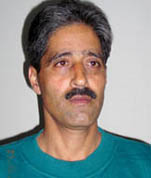 *Born on 20th March, 1960 in Murran a village in North Kashmir,
Chander M. Bhat is presently working as an Assistant Supdt. Posts, in
Department of Posts, Govt. of India. His articles regarding Posts and of
non-political nature stand widely published in various papers and
magazines of the country. A booklet 'How to Collect Stamps" published by
the Department of Posts, has earned him genuine accolades. He worked on
the project of tracing the roots of his co-villagers and of the village
Murran, resulting into the culmination of a widely acclaimed book
"Murran -My Village". Man with depth, Chander M. Bhat has also another
book, "Ocean by Drops" (collection of poems) in his vase having colorful
poems. His book "Ancient History of Jammu and Kashmir", confirms his
researching capability. Various research papers like "The Splendor that
is Amarnath" and "Vitasta" The Sacred River of Kashmir" are valuable
additions to his works that has proved very fruitful and guiding force
in the exile period of Kashmiri Pandits community of which the author is
also a member.
*Born on 20th March, 1960 in Murran a village in North Kashmir,
Chander M. Bhat is presently working as an Assistant Supdt. Posts, in
Department of Posts, Govt. of India. His articles regarding Posts and of
non-political nature stand widely published in various papers and
magazines of the country. A booklet 'How to Collect Stamps" published by
the Department of Posts, has earned him genuine accolades. He worked on
the project of tracing the roots of his co-villagers and of the village
Murran, resulting into the culmination of a widely acclaimed book
"Murran -My Village". Man with depth, Chander M. Bhat has also another
book, "Ocean by Drops" (collection of poems) in his vase having colorful
poems. His book "Ancient History of Jammu and Kashmir", confirms his
researching capability. Various research papers like "The Splendor that
is Amarnath" and "Vitasta" The Sacred River of Kashmir" are valuable
additions to his works that has proved very fruitful and guiding force
in the exile period of Kashmiri Pandits community of which the author is
also a member.Presently the author is working on "OOL - THE NEST" a six volume project on all the 595 (each volume of about 2500 pages)Kashmiri Pandit villages of Kashmir. |
Wednesday, February 20, 2019
NARAN NAG
Subscribe to:
Post Comments (Atom)
No comments:
Post a Comment